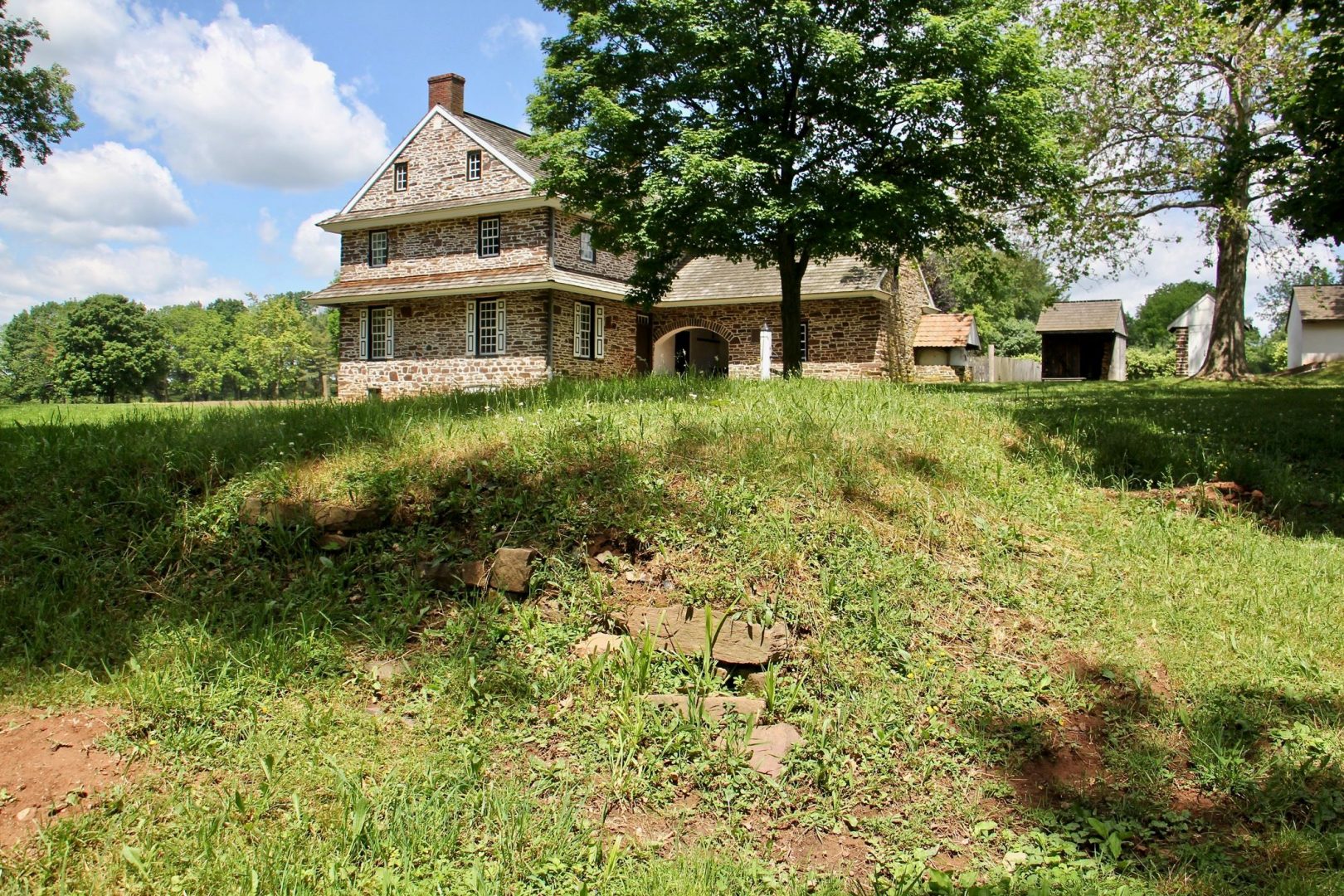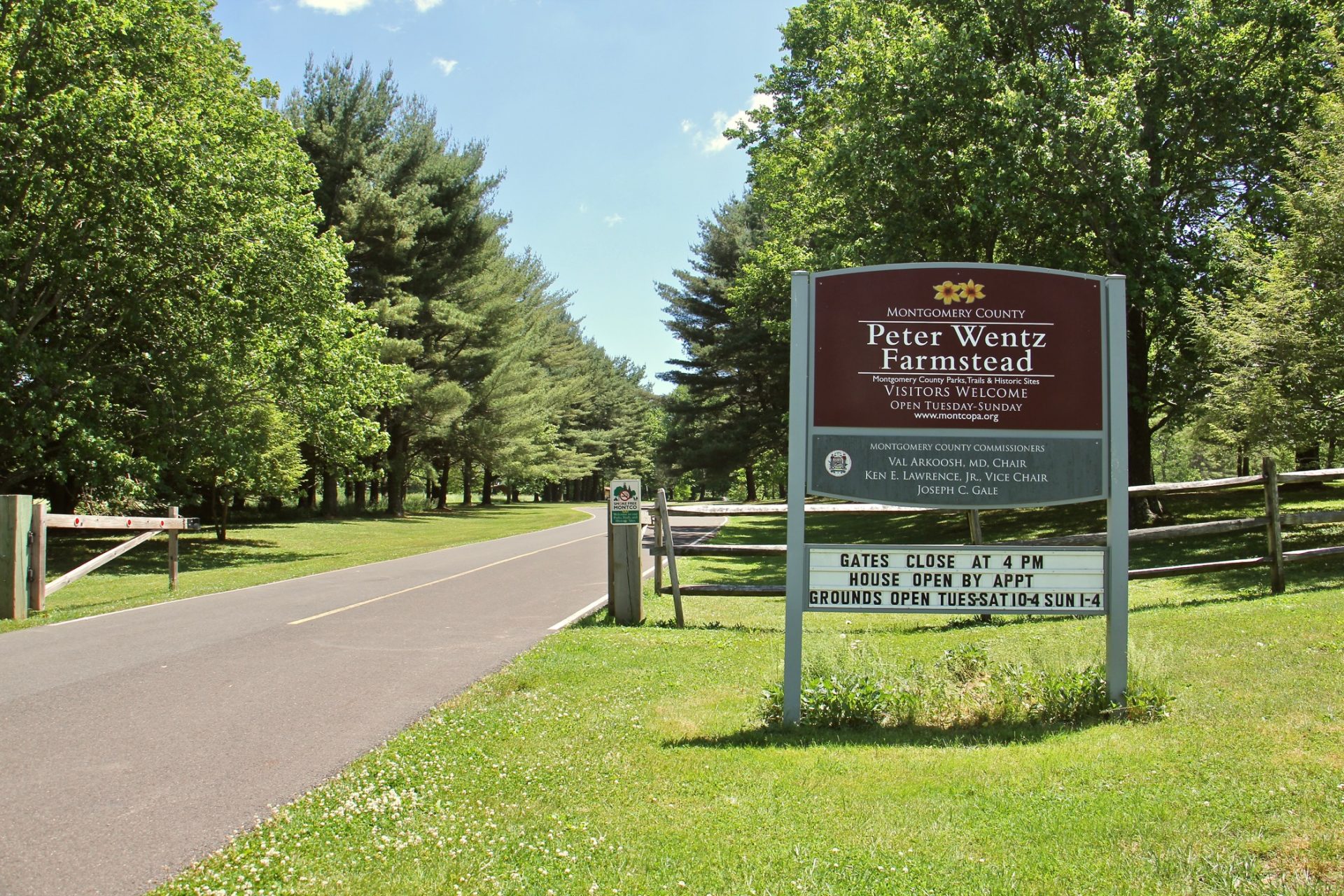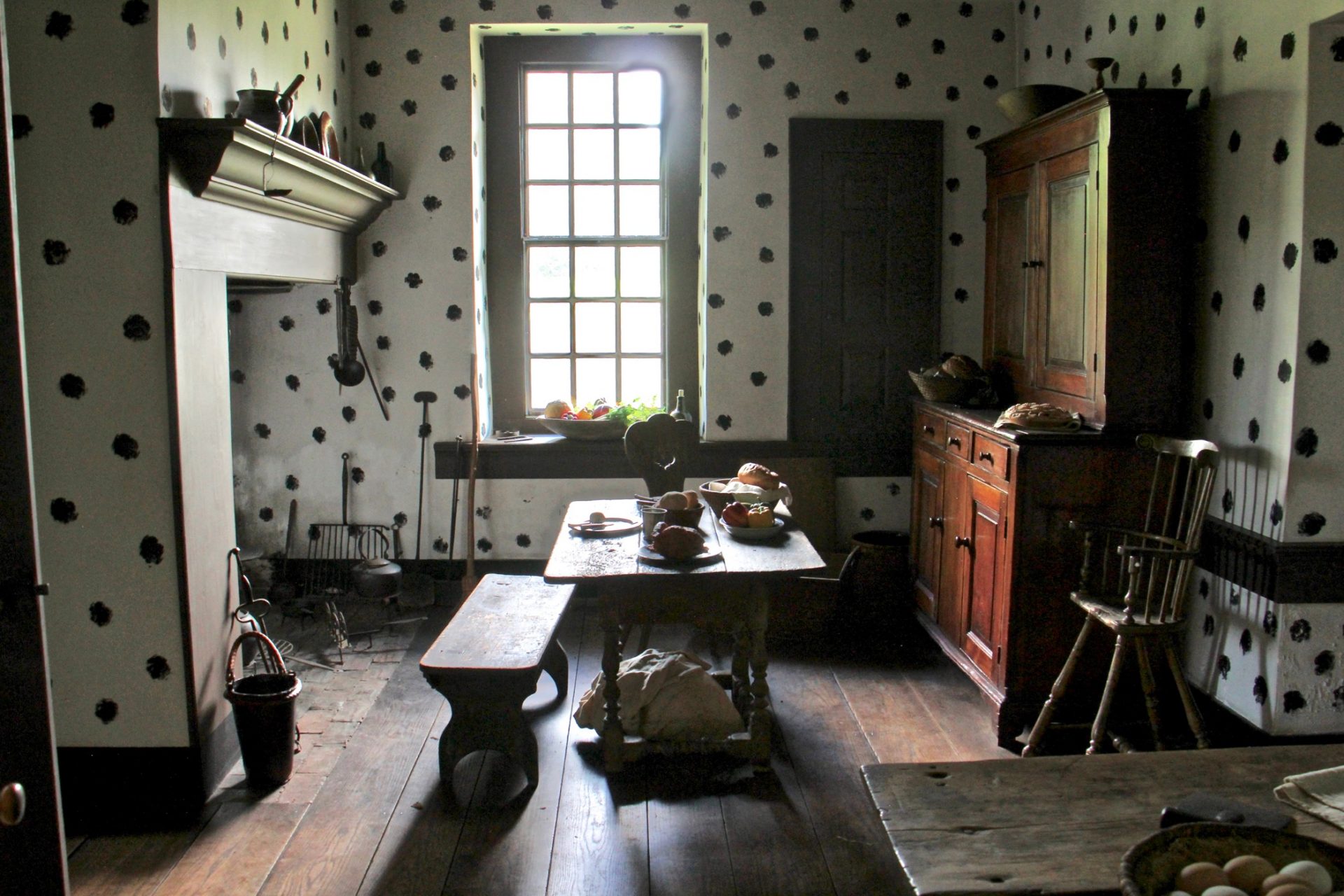
The location of the sawmill at Peter Wentz Farmstead, where Jack the runaway likely worked, can be identified by exposed stones under the sod behind the farmhouse.
Emma Lee / WHYY

The location of the sawmill at Peter Wentz Farmstead, where Jack the runaway likely worked, can be identified by exposed stones under the sod behind the farmhouse.
Emma Lee / WHYY

Emma Lee / WHYY
The location of the sawmill at Peter Wentz Farmstead, where Jack the runaway likely worked, can be identified by exposed stones under the sod behind the farmhouse.
(Worcester Twp. ) — The historic Peter Wentz Farmstead in Montgomery County has been selected by the National Park Service for recognition as a National Underground Railroad Network to Freedom site. The Worcester Township property will join more than 680 other places in the network database.
“The recognition of historic architecture, such as the Peter Wentz Farmstead, and the multisensory experience will help to educate future generations about Black history in our backyard and beyond,” Ken Lawrence, vice chair of the county Board of Commissioners, said in a statement.
The farmstead originated with Peter and Rosanna Wentz in 1744. In 1777, the house became the headquarters of then-Gen. George Washington during the Revolutionary War. It was there that Washington formulated a plan to try to keep British soldiers from overtaking Philadelphia.
But it was also there that several people were enslaved — most notably, a Black American known as Jack, who attempted to escape in 1766 (as documented in the local newspaper) and did so again in 1769. It is not known whether Jack’s second attempt was successful, but there isn’t any evidence to the contrary.

Emma Lee / WHYY
Peter Wentz Farmstead in Montgomery County has been recognized by the National Parks Service as a National Underground Railroad Network to Freedom historic site.
More than a decade after the war, the Wentzes sold the property to Melchior Schultz and his family. Generations of the Schultz family occupied the house until the county purchased it in 1969.
Since then, the county has restored the property in keeping with its 18th-century roots: refurbishing old furniture, reconstructing a barn, and maintaining the surrounding 90 acres as a working farmstead.
The Underground Railroad Network to Freedom Program works to preserve sites and locations that were integral to the safe passage of enslaved people. It also aims to expand on the definition of what is typically thought of as the Underground Railroad.
“The Underground Railroad Network to Freedom, as created by the National Park Service, recognizes that there’s far more to that story than just the kind of like white helpers who carry people to freedom — that there were many, many people, enslaved people, free Black people, who were doing a lot of work to get others to freedom, or even to free themselves in their communities and their family. So the Underground Railroad Network to Freedom recognizes a much broader array of stories,” said Virginia Kopacki, the museum educator at Peter Wentz Farmstead.
Kopacki first heard of the program two years ago, while attending a conference. In 2019, she began the monthslong application process, which involved submitting documentation that spoke to a story of abolition occurring at the Farmstead.
“Applicants submit this paperwork to us, and twice a year the Network to Freedom staff reviews these applications, and determines whether the documentation is sufficient. We have regional coordinators, different locations around the country who work with the applicants on putting all of that material together, and making sure that the case is as strong as possible for justifying inclusion,” said Diane Miller, national program manager for the National Underground Railroad Network to Freedom.
What stood out for Miller about the site was that it serves as a reminder that slavery was more widespread than history often reminds us.
“It’s very different, I think, from the popular conception of Pennsylvania, and particularly the Philadelphia area as being this destination for freedom-seekers. Actually, in the colonial period, all of the colonies had slavery,” Miller said.

Emma Lee / WHYY
The Peter Wentz house is preserved as it would have appeared in the late 18th and early 19th centuries, when George Washington slept there.
She also pointed to the fact that the area had an issue with people attempting to recapture formerly enslaved individuals.
Usually, the recognition process takes several rounds of applications due to a lack of evidence, but Kopacki said Peter Wentz Farmstead had sources of preserved evidence, such as tax records and newspaper articles.
“Because of Jack, because he sought freedom on his own terms and because he was looking for liberty, we actually were designated as an Underground Railroad Network to Freedom site,” Kopacki said.
The museum at the farmstead has an exhibit dedicated to Jack and his story, including a re-creation of his attire. Currently, the farmstead can be visited Tuesday through Sunday by appointment only because of pandemic restrictions.
Kopacki said there is a troubling tendency to tell the story of white landowners propped up by history as pioneers.
“And it really hides and obfuscates so much of the nuance to stories. And so many people like Jack are kind of shunted to the side, or kind of erased out of the narrative entirely, because it’s more convenient for other museum professionals or historians, academics — it’s certainly more comfortable for members of the public sometimes to kind of go to these places and not have to face the harder side of history,” she said.
Recently, like some members of the public, the field of public history has had a reckoning, she said: Maybe history shouldn’t be solely about those in power. Maybe it’s possible to tell the story of beautiful land without burying the stories of the human suffering there, such as chattel slavery.
“It’s a bit of a reclamation, I suppose, of the narrative that we’ve told here, but it’s also a chance to reach more people and to help find stories that touch more lives, and to be responsible with history — because museum work and the kind of stories we choose, that isn’t a neutral choice,” Kopacki said.
WHYY is the leading public media station serving the Philadelphia region, including Delaware, South Jersey and Pennsylvania. This story originally appeared on WHYY.org.

Get insights into WITF’s newsroom and an invitation to join in the pursuit of trustworthy journalism.
The days of journalism’s one-way street of simply producing stories for the public have long been over. Now, it’s time to find better ways to interact with you and ensure we meet your high standards of what a credible media organization should be.